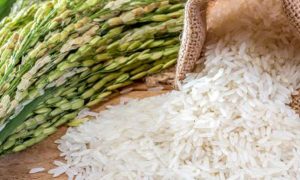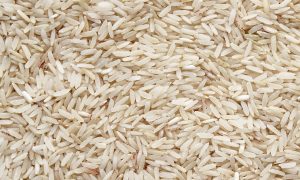CRISPR-editing rice crops: Mitigating the impacts of rice disease in sub-Saharan Africa

Rice is one of the most important crops in sub-Saharan Africa. However, it is particularly at risk from disease. A new study has found that CRISPR technology can be used to edit genes in some strains of rice, developing resistance.
Rice is a key staple crop in sub-Saharan Africa, with more than 60% of rice produced consumed there. However, the Rice Yellow Mottle Virus (RYMV) causes a disease that has the propensity to wipe out African rice crops. This disease, which is often considered the most dominant rice disease affecting irrigated and lowland ecologies, has since its discovery been observed in nearly all of Africa’s rice-producing countries.
In this study, published in the Plant Biotechnology Journal, researchers aimed to develop resistance to the disease.
The cost of the virus
Many of Africa’s rice producers have barely a hectare of land to themselves. In this environment, between 10% and 100% of rice yield is regularly lost to disease, putting strain on food security.
“RYMV has an impact on food security and poverty of smallholder farmers. The impact is variable from one year to the other, dependent of various factors, and is very difficult to quantify precisely. However the disease is often described by African smallholder farmers as one of the main disease of rice and, considering the importance of rice in Africa and in the world, some authors included RYMV in the Top Ten of economically important plant viruses,” Laurence Albar, one of the researchers, told FoodNavigator.
Developing resistance
There are currently three resistance genes to RYMV, and mutations in just one of these genes enables a rice strain to achieve resistance.
While one domesticated rice species, Oryza glaberrima, also known as African rice, has developed resistance in some cases, it is low yielding and not widely used. However, resistance in the higher yielding and more widely used Oryza sativa, is extremely low. While O. glaberrima has almost the full spectrum of resistance genes, the higher-yielding O. sativa does not.
Very few rice varieties highly resistant to RYMV (without symptoms or impact on yield) were
available in the most widely cultivated species of rice (Asian rice): two traditional varieties
originating from East Africa, namely Gigante and Bekarosake, and 3-4 additional lines derived
from those varieties and developed in the 2000’s by rice breeders of West African countries,”
Albar told us.
“High resistance has also been observed in several varieties of another cultivated rice species
(African rice) that is now only rarely cultivated. These resistant varieties are not very highyielding, and their characteristics (resistance to other diseases, size, cycle length, etc.) are not
what many farmers are looking for. Transferring their resistance to better adapted varieties
through classical breeding methods is tedious and time-consuming. That is why genome editing
is highly promising.”
The challenge was to develop resistance in higher yielding rice varieties. To do this, the
researchers used CRISPR/Cas9 gene editing technology to edit one of the resistance genes,
OsCPR5.1, in the Asian Japonica rice variety Kitaake, creating mutations within this gene and
thus developing resistance in the rice without any sacrifice in yield.
“Based on greenhouses experiment on the lines we developed (and also on African rice varieties
that carry similar mutations), we did not observe any negative side effects on plant
development. However these results have to be confirmed in field experiments, in relevant agroecosystems, before considering the deployment of the engineered varieties on large areas,”
Albar told us.
The key challenge now is to test more African rice varieties to see if they can produce resistance
in these. Furthermore, to provide African rice farmers themselves with the edited, resistant rice
varieties.
“In the next stage, we will carry out the same approach on high-yield varieties adapted to
cultivation by smallholder farmers in African countries. If the absence of negative side effects is
confirmed, these varieties can be transferred to smallholder farmers to be deployed on a large
scale to avoid RYMV disease and associated yield losses, thus contributing to lift out people of
poverty and food insecurity.”
Saving rice crops
The most prominent focuses of the project are RYMV and Bacterial Blight (BB), another
particularly devastating rice disease.
“We now also have edited blight resistant rice, especially relevant due to a major outbreak
caused by the inadvertent introduction of Asian strains to East Africa, with major damage and
rapid spread,” Frommer told FoodNavigator.
“We also have lines for Tanzania and East Africa that are resistant, and did not use editing,
maybe not as good as the edited lines, but due to regulatory situation the best possible
solution.”
Frommer considers the project’s biggest success developing resistance to BB for India and
Africa.
Source Link: https://www.foodnavigator.com/Article/2024/01/22/CRISPR-used-to-build-disease-resistance-in-African-rice-crops
















